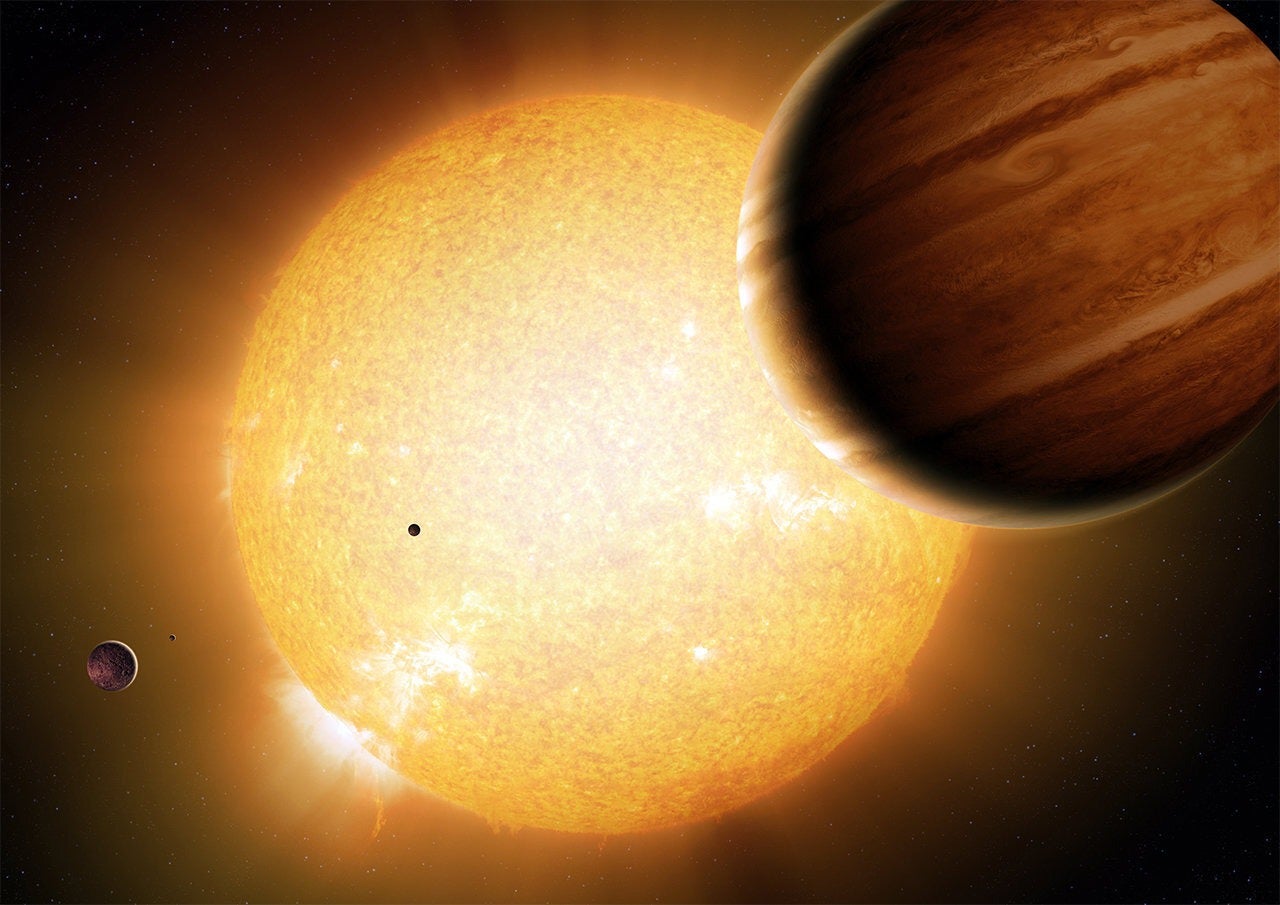
NASA’s TESS satellite has identified a treasure trove of potential exoplanets, but those initial detections require detailed follow-ups to confirm. Now a network of citizen scientists has confirmed one of those exoplanets, a “warm Jupiter” sitting about 300 light-years away, that represents an intriguing new class of planet that will help future astronomers understand the evolution of giant worlds.
TESS, the Transiting Exoplanet Survey Satellite, finds exoplanets using a technique called the transit method. It works by staring at a star and, if the alignments are just right, waiting for an orbiting exoplanet to cross in front of the face of that star. That will cause a barely perceptible decrease in the overall brightness of the star.
While the method relies on pure chance, TESS observes so many stars all across the sky that it has so far amassed over 7,000 candidate worlds. But because TESS is so busy trying to detect as many planets as possible, almost all of these detections rely on a single transit event: just one pass of the exoplanet in front of its star. The task of confirming the existence of the exoplanet is left to follow-up surveys with ground-based observatories, which is a tedious, difficult, and time-consuming job.
This is where citizen scientists come to the rescue. Using a network of telescopes scattered across the globe, amateur astronomers can perform the necessary observations needed to turn a candidate exoplanet into a confirmed one. Recently, the Unistellar Network and Exoplanet Watch has confirmed a new exoplanet, TIC 393818343 b, which sits about 300 light-years away from Earth.
To make the confirmation, half a dozen amateur astronomers independently observed the planet over the course of two months, all donating their time and their expertise in the name of science. And what they found is astounding.
A year on this exoplanet is 16 days
This new exoplanet is huge, roughly four times the mass of Jupiter. It also has a very strange orbit, whipping around its parent star at a distance only 12% that of the Earth’s orbit around the Sun, meaning that its year lasts only 16 days. Additionally, the planet is highly eccentric, with an eccentricity 0.6. (Compare that to Pluto’s eccentricity of 0.25, and you’ll see that this new exoplanet’s orbit is wildly stretched out.)
TIC 393818343 b belongs to a relatively new class of exoplanet known as warm Jupiters. These seem to be a transition stage between regular Jupiters, like the giant planet in our own solar system, and the so-called hot Jupiters, which are gas giants orbiting so closely to their stars that their atmospheres are distended and puffy.
Astronomers don’t believe that hot Jupiters last for long; the intense heat and radiation from their parent stars are more than enough to completely evaporate all their gaseous atmospheres. And these kinds of giant planets couldn’t possibly form that close to their stars, as the planets need to accumulate vast quantities of frozen ices and light hydrogen and helium gas to achieve their impressive bulky statures.
TIC 393818343 b may get hotter
So hot Jupiters are probably regular Jupiters that have somehow migrated inwards, either through interactions with other planets or by drag through a gaseous disk. The fact that we see so many hot Jupiters despite their temporary nature means that this must be a very common scenario throughout the galaxy.
TIC 393818343 b is a warm Jupiter, meaning that it might well be on its way to becoming a hot Jupiter. If this is true, this is indeed a rare find, as models suggest that giant planets do not spend a lot of time in their inward migration phase. This kind of exoplanet is more than worthy of even more follow-up observations, as more detailed observations of the planet will hopefully illuminate the relationship between regular and hot Jupiters and how the migration process unfolds.
With thousands of worlds yet to classify, this is far from the end of citizen science-led exoplanet research. Astronomy has always maintained a fine tradition of amateur involvement and discovery, and the latest adventure into exoplanet hunting is just the beginning of a new chapter.









